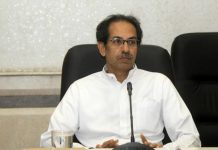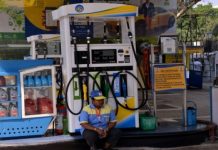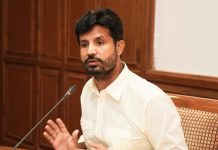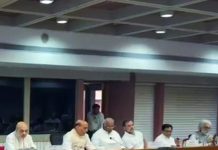
Despite the flagship Ayushman Bharat scheme guaranteeing free medical facility up to Rs 5 lakh to the poor, the rural healthcare infrastructure created under NRHM is not equipped to handle cardiovascular emergencies resulting in heavy casualties, writes Mudit Mathur
Despite the well intentioned flagship programme of Prime Minister’s Ayushman Bharat guaranteeing free medical facility up to Rs 5 lakh to poor and deprived classes, the rural healthcare infrastructure created under National Rural Health Mission (NRHM) is not equipped to handle cardiovascular emergencies resulting in heavy casualties. Cardiovascular diseases (CVDs) are the leading cause of mortality at a global level (31%) as well as in India (27%). Unfortunately, the infrastructure for development of the rural cardiology system is in doldrums as 1706 non-interventional cardiologist doctors who obtained such specialisation after MBBS failed to get recognition from the government to become eligible to impart expert treatment in the public sector.
In eastern Uttar Pradesh, between June 14 and 19, more than 74 people across two blocks of Ballia district mysteriously died in a span of just five-six days in June. 154 people were admitted on June 15. Director Infectious Diseases UP, Dr AK Singh, explained to the media that the deaths were reported from rural areas of the district where most of the patients complained of chest pain, breathlessness and fever when they were admitted at the hospital.
On June 16, Sanjay Verma, 21, died while dancing to the tunes of a DJ in Gokul Nagla village of district Shahjahanpur in UP. And just a few days before in Gohadia village of Bahraich district, a couple – both in their early 20s – died on their wedding night on June 1. There was a common thread in both the incidents: cardiac arrest. It is no more an urban phenomenon. Cases of people, mostly young, dying of sudden cardiac arrest or due to heart attack has increased at an alarming rate in rural areas across the country.
Medical studies suggest that a heat stroke and cardiac arrest are two medical emergencies that are closely associated with each other. Heat stroke can sometimes lead to cardiac arrest, making it a serious and potentially life-threatening condition. The initial treatment in both the cases remains the same and cardiologists are better skilled as they know how to revive the patients and what medicines need to be administered in acute emergencies.
The Community Health Centres/Primary Health Centres across UP and even in most parts of the country are not having any support system to deal with growing cases of cardiovascular diseases (CVD). These rural health care centres have not deployed cardiologists and thoracic and cardiovascular surgeons at grassroots to attend sudden emergencies. Most of the casualties occur due to lack of skills to deal with in golden hours which could be easily handled by using non-conventional cardiac skills. There is a huge shortage of cardiologists and thoracic and cardiovascular surgeons in India.
Timely intervention could have saved thousands of lives. However, such an alarming situation failed to sensitise the Union government and Medical Council of India (now known as National Medical Commission) to take a decision on a verdict of Delhi High Court since 2019 that directed them to consider granting recognition to Post Graduate Diploma in Clinical Cardiology being sought by Indira Gandhi National Open University (IGNOU).
IGNOU within its legal competence introduced PGDCC course in 2006 with an objective to develop a cadre of non-interventional cardiologists who have to undergo “two-year fulltime rigorous training in top cardiac hospitals in the country”. In order to be eligible to apply for the PGDCC course, a candidate is required to have an MBBS degree. It was asserted before the court that the syllabus and training in non-invasive procedures of cardiology of trainees are almost identical, i.e., training provided to PGDCC students are similar to that provided that super speciality level of cardiology (DM) of All India Institute of Medical Sciences.”
“Trends in Cardiac Care utilization under Ayushman Bharat” were studied by a specialists group consisting Parul Naib (Delhi University), Pulkit Kumar (Tata Institute of Social Sciences), Sudha Chandrashekar, (London School of Hygiene and Tropical Medicine), University of London and Owen Smith, (Harvard University, Cambridge, Massachusetts), USA.
The group analysed all cardiac claims filed under Pradhan Mantri Jan Arogya Yojana (PM‑JAY) for a period of 17 months (from the inception of the scheme in September 2018 to February 2020). It was found to be significantly higher at 26% indicating that a very high proportion of the scheme was utilized to provide free cardiac care to beneficiaries coming from the poorest segment of the population. Most government hospitals in rural areas don’t have cardiologists and the death rate in North Eastern states is three times higher than the national average.
More than half a billion people around the world continue to be affected by cardiovascular diseases, which accounted for 20.5 million deaths in 2021– close to a third of all deaths globally and an overall increase of the estimated 121 million CVD deaths. The group analysis also indicates significant variation in the supply of the cardiac facilities and the need to further develop health infrastructure for cardiac care, particularly in certain states where the supply is found to be inadequate.
A study published in the medical journal “The Lancet Global Health” revealed that deaths due to cardiovascular disease were on the rise in India, causing more than one-quarter of all deaths in the country in 2015. The report says that it is affecting rural populations and young adults the most. The findings suggest that the rate of dying from ischaemic heart disease has increased rapidly in rural areas of India in populations aged 30 to 69 and surpassed those in urban areas between the year 2000 and 2015.
The world health report launched by World Heart Federation in Geneva in May 2023, the deaths from Cardio Vascular Diseases (CVD) surged 60 percent globally in the past 30 years. CVD was the leading cause of deaths worldwide in 2021 with four in five deaths occurring in low and middle income countries.
The death rate due to cardiovascular diseases surged by around 34% from 115.7 to 209 deaths per one lakh population in India between 1990 and 2016. The probability of dying from stroke decreased overall but increased in India’s northeastern states. In these states, deaths due to stroke were about three times higher than the national average.
The chairman, Board of Governors of the Indian Association of Clinical Cardiologists, Dr Rajesh Rajan while sharing details about the court matter with ‘Tehelka,’ said, “The Delhi High Court held that prior permission of the Central Government under section 10A of the IMC Act, 1956, to IGNOU, is not required and quashed the stand of the MCI denying recognition to the PGDCC. It further directed the Central Government to consider IGNOU’s application for recognition of the PGDCC qualification under Section 11(2) of the IMC Act, as stated in the aforementioned judgment.” The government has yet to take a decision on the issue.
This has virtually compelled a process of brain drain to other countries as most of the trained non-conventional clinical cardiologists left the country and started practicing in countries like Europe, USA and UAE—where they are much in demand. The private sector is also engaging them like Medanta, Narayana Hrudayalaya Bangalore, Escorts Heart Institute, U.N Mehta Heart Hospital in Gujarat, Asian Heart Institute Mumbai and many more. These MBBS doctors learnt clinical cardiology under the best experts and were capable of saving lives during initial moments after a heart attack.
Dr Manoj Gerela, who currently runs Sigma Hospital in Mulund in Mumbai, told Tehelka, “The government hospitals in sub-urban and rural Mumbai don’t have cardiologists; patients are referred to higher centres or private hospitals.” “The irony is that despite being an expert in clinical cardiology and capable of treating patients during the ‘golden hour’, we cannot designate ourselves as a specialist doctor in cardiology,” he lamented.












